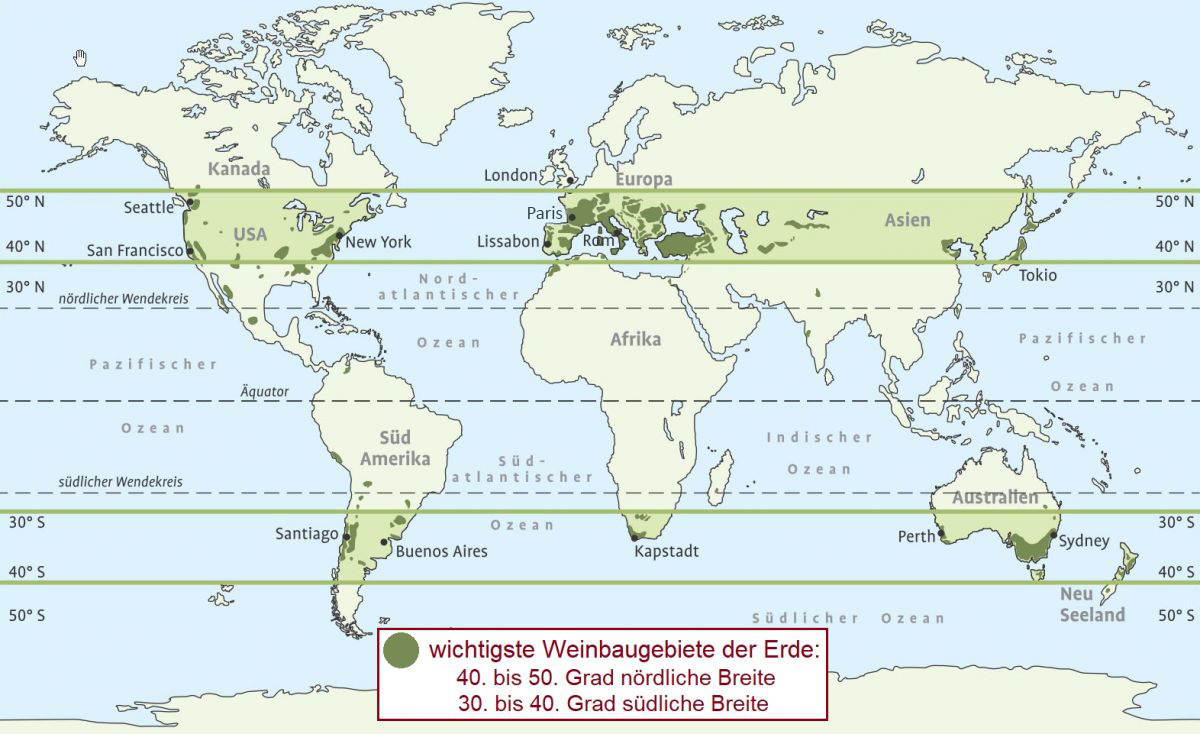Viticulture in Macedonia
Macedonia, formerly part of Yugoslavia, is often confused with the province of Macedonia in northern Greece due to the fact that it has the same name. We decided on the German spelling Macedonia, for the Greek province the spelling “Macedonia”, so that the distinction is a little easier.

The winemaking tradition in Macedonia goes back a long time, which is not surprising given the proximity to Greece.
Today the area under vines in this country in the Balkans covers a good 22,000 hectares for viticulture and about as much for the production of table grapes. The area used for viticulture is mainly planted with red grape varieties. In addition to the local grape varieties Kratosija, Prokupec and Vranec, Cabernet Sauvignon and Merlot in particular are grown. Among the white vines, Chardonnay, Muscatel, Sauvignon Blanc, Smederevra and Welschriesling are mainly represented.
Macedonia does not have any access to the sea, it is separated from the Adriatic by Albania and access to the Aegean is prevented by the location of Greece. Despite these prerequisites, there are areas in Macedonia with a continental and a Mediterranean climate, as the distance to the Aegean Sea is less than 60 kilometers in places.
The large lakes on the border with Albania also have a major influence on the climate , such as the Prespa lake.
Since 2004 there has been a winegrowing law in Macedonia, which is based on the requirements of the EU and largely takes into account the standards applicable in the EU. Since then, Macedonian wine has experienced a noticeable upswing in terms of quality, even if it is not easy for many winegrowers to adhere to the applicable legal principles.
Does the trend continue as it has been in recent years There is still a lot to be expected from Macedonia and Macedonian wines can also be seen as an attractive alternative to the well-known wines in Western Europe.
Macedonia's wine-growing history goes back to the 13th century BC - from the time of Alexander the Great to Roman and Turkish rule. Since most people have never tasted or seen any Macedonian wine, few know that the country has a rich tradition of wine production and consumption, and that many indigenous grape varieties are grown in its vineyards. Today there are around 80 wineries in Macedonia and one of the most famous names in the wine industry is Tikvesh (also spelled Tikveš). The Tikveš plain is considered to be the heartland of winemaking in Macedonia. A well-known winery with the same name - Tikveš Winery - has been producing first-class Macedonian wine for over 125 years. In the late 1970s, Tikveš became the largest winery in Southeast Europe and in 2008 it was named one of the 30 most innovative wine brands in the world at the Wine Innovation Forum in Paris.
Wine economy
- economic importance: 17-20% of GDP of agriculture
- second largest agricultural export after tobacco
Region
- North Macedonia is in the oenological C3 area (comparable to southern France, Corsica, parts of Italy and Spain)
- The addition of sugar is prohibited
Harvest
- Cultivated area: 33,423 ha (of which 15% table grapes)
- 28,213 hectares of vineyards represent 0.4% of the global area under cultivation
- 28 grape varieties, 50% red, 50% white
- Up to 125,000 t harvest from wine growers and our own vineyards
- 3 wine regions / 16 sub-regions
Production
- Wine production: around 91 million liters
- 50% production of bottled wine
- 45% barrel goods
- 5% Bag-in-Box
Wineries
- Number of registered wineries (2018): 74
- 90% with a capacity of less than 5 million liters
- 5 wineries with a capacity of 5 million - 15 million liters
- 4 wineries with a capacity of 15 million - 50 million liters
- Domestic consumption: 10 liters per capita
Climate
Centrally located in the southern Balkans, North Macedonia has Mediterranean and continental influences, with warm, dry summers and autumns. Especially in July and August the temperatures rise up to 45° C. The nights are much cooler and the winters moderate. Annual rainfall is between 440mm and 740mm. Together with 260 hours of sunshine, the location factors are very good. Long periods of drought cause problems, especially in the central region of Vardar.
Viticulture has existed in the region for 4000 years and has left ample archaeological evidence in paintings, reliefs and sculptures that can be found in the country's museums.
Alexander the Great (356-323 BC) is the most important historical figure of North Macedonia. The ancient Greek city-states on the southern border saw the Macedonians as primitive barbarians with whom they did not want to have anything to do. That changed when Alexander militarily defeated them one after the other and then conquered countries from Egypt to India in a historically unprecedented campaign. As in Greece, wine and drinking bouts were popular in ancient Macedonia. Alexander regularly lost his self-control and once even stabbed one of his closest friends with a spear.
The region's wine was also popular in the Roman Empire. The areas grew and so did the export volume. The garrison towns had a high recreational value. After work, soldiers could, for example, go to the amphitheater or pass the time in the tavern playing dice. The remains of the bar furnishings can still be admired in the Stobi archaeological site in the Tikveš region.
In subsequent orthodox Christianity, red wine takes a central role as part of the liturgy as the blood of Christ. The monasteries also improved cultivation techniques.
Under Turkish rule from the 14th to the 20th century, wine production essentially came to a standstill.
With Tikveš, the first modern winery only opened in 1885 and soon shone with technical innovations such as a semi-automatic bottling plant.
As a result of the phylloxera plague and the two world wars, the industry had to be rebuilt from scratch in 1945. It was only at that time that Vranec was being cultivated in the Republic of Macedonia of socialist Yugoslavia. The variety came to Montenegro, where it performs just as well, but on a much smaller area.
By the 1960s, an estimated 14,000 hectares were under vines, covering two-thirds of Yugoslavia's needs. At the time of the declaration of independence in 1991, an estimated 39,000 hectares were planted, with a focus on the Vardar valley, and the state-owned farms went into private hands. Not much of the factory equipment was usable for the international market.
The ethnic group of the Macedonians as well as their language are lost today. North Macedonians are Slavs and Albanians. The borders also do not coincide with pre-Hellenic Macedonia. This was one of the reasons why the Greeks did not accept North Macedonia as a state for a long time. However, the Greek region of Macedonia can neither claim geographical nor ethnic continuity. Fortunately, the conflict has now been resolved. By far the largest investments in North Macedonia come from Greece. With the capital contributions, the large companies are technically up to date, often even better. The entire sector is increasingly well positioned.
Source: ProWein.de
Designation for the geographical areas where, under optimal conditions, quality viticulture is possible and vines can thrive. 95% of the most important wine-growing areas are also located here. They are from 40 to 50 degrees north and from 30 to 40 degrees south latitude. But there is also viticulture in between, mostly in higher-lying areas. A list of all wine-growing countries can be found under the relevant continents. The criteria for the suitability of a region for viticulture are referred to as viticulture worthiness. See also climate, climate change, highest vineyard, northernmost vineyard and southernmost vineyard, as well as records.

Graphic: Der Winzer 1 - Weinbau, Ulmer Verlag 2019











